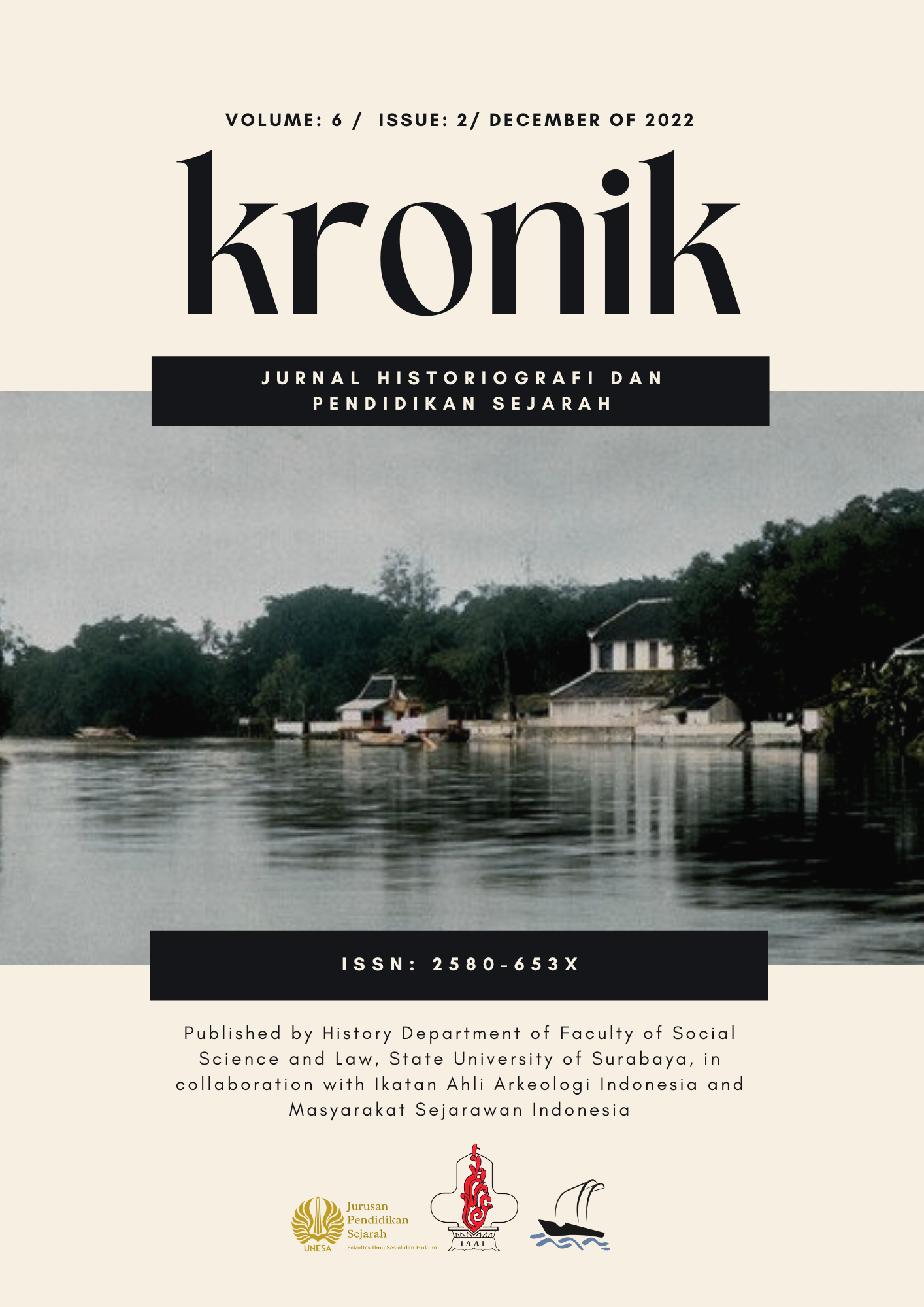RIJSTTAFEL DI JAWA MASA KOLONIAL BELANDA (1900-1942)
DOI:
https://doi.org/10.26740/kjhi.v6i2.21292Abstract
Current culinary developments can’t be separated from culinary history itself. One of the culinary developments during the Dutch colonial period was the existence of Rijsttafel. Rijsttafel is the result of the acculturation of two cultures, namely Indigenous culture and European culture. Rijsttafel is unique because it is the result of two very distinct cultures. Until now, we can still find rijsttafel dishes in restaurants or homes, even though they are not as popular as they used to be. This study aims to determine the role of nyai in the development of rijsttafel. Apart from that, it is also to study the etiquette in the risjttafel. The method used is the historical method which includes 4 stages, heuristics (source gathering), source criticism, source interpretation, and finally historiography (history writing). The results of this paper show that the role of nyai in cultural acculturation is very large, especially in the context of rijsttafel. Nyai play an active role in the household where this culinary cultural exchange takes place. Rijsttafel itself has also experienced significant development so that it can attract the attention of tourists which is the main attraction of the Dutch East Indies. It should also be noted that in rijsttafel dishes there are some etiquette differences with ordinary indigenous dishes. From this paper it can be seen that Europe not only had a bad impact on the Dutch East Indies, but also had a good impact. This good impact is manifested by the existence of the rijsttafel dish which introduces the indigenous people to the processing of dishes and modern cooking utensils.
Downloads
Published
How to Cite
Issue
Section
License
Copyright (c) 2023 Universitas Negeri Surabaya

This work is licensed under a Creative Commons Attribution-NonCommercial-ShareAlike 4.0 International License.
 Abstract views: 820
,
Abstract views: 820
, PDF Downloads: 2702
PDF Downloads: 2702








